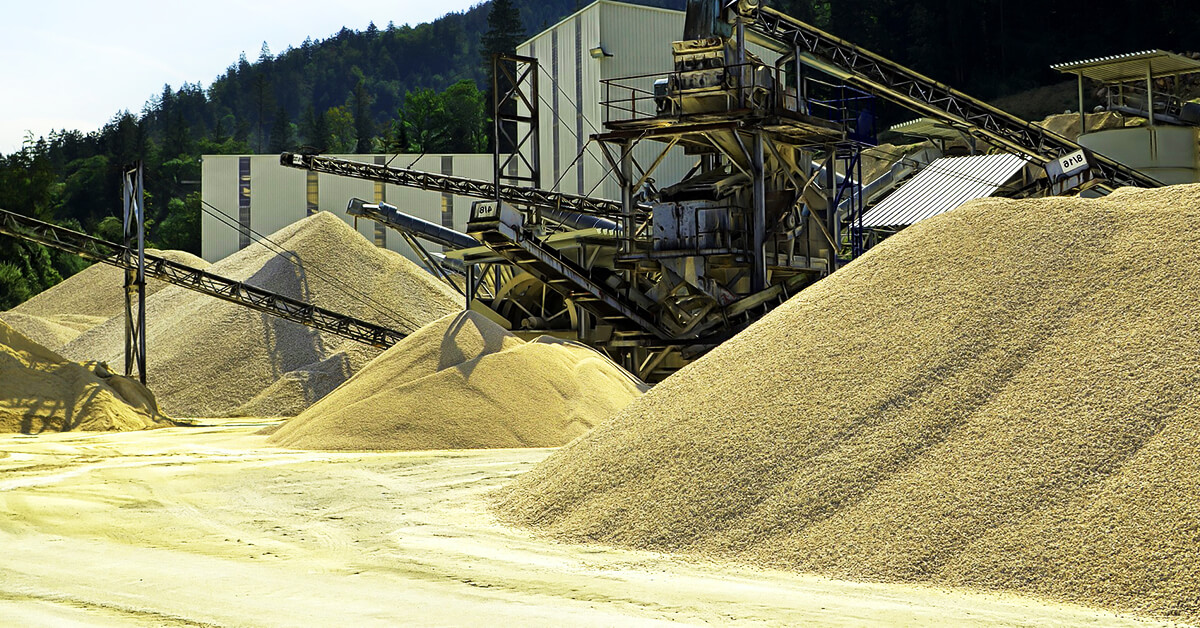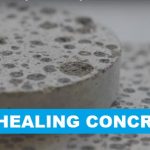As probably you already know that concrete is made by cementing aggregates together with cement. Therefore, the types of aggregates that we use in designing and making the concrete is an important factor in determining the end quality of the concrete. Generally, aggregates used in concrete can be divided in two categories: namely the fine aggregate and coarse aggregate. However, beyond these two simple classifications, aggregates in concrete also usually classified according to shapes, geological origins, unit weight, etc. Thus, let us dive into knowing important things about types of aggregates.
Introduction
In a typical concrete mix, aggregates usually takes up between 65 to 75 percent of the total volume. One main reason is that it is the cheapest material available that able to provide good bulk volume as well as the durability to the concrete mix.
To make a good concrete mix, the fine aggregate and coarse aggregates must be used in optimum dosage without sacrificing the quality of the concrete. Coarse aggregates are the one will increase the overall density of the concrete, while fine aggregates are used to hold the coarse aggregates together to avoid segregation. Without coarse aggregate the mix with cement and sand is called mortar.
Since aggregates holds a very important function in the quality and quantity of concrete mix, it is therefore, very important to make sure the aggregates selected and used meets certain qualities and requirements.
Types of Aggregates Based on Geological Origin
Geologically speaking, aggregates are generally drawn from natural sources. The rock mountains are blasted to gather the required aggregate. These aggregates are then crushed to meet the required criteria. The suitability of these aggregates from surrounding quarries depends on its geological history of the rock formation.
Natural Aggregate
These aggregates as the name sounds, it is obtained from the natural resources. They are either derived by mining or quarrying activities. The mining aggregates are formed into their present shapes and textures through the initiatives of mother nature, such as water, wind, snow, etc. Usually the one obtained through mining activities would be the fine aggregates.
On the other hand, the quarrying aggregates are derived through blasting the mountains of rocks/boulders; then further crushing and sieving into desired sizes. These aggregates come in both versions, fine and coarse.
In both cases, whether mined or quarried, both these aggregates source can be further divided into three main groups according to their geological mode of formations. The aggregates can be either igneous, sedimentary, or metamorphic origin. And on to of that, within these groups the quality of the aggregates also varies from place to place.
Igneous Rock – highly preferred due to their hardness, toughness, and density. Most of the concrete mix are made with aggregates from this family. The igneous rock can further broken down by the way they were formed either by intrusive or extrusive. The one aggregate that most commonly used in concrete is the granite, which is formed through intrusive process.
Sedimentary Rock – Not highly preferred, but still can be an option for concrete making depending on the history of the rocks. It is not uncommon to use Limestone and Siliceous sand in concrete making where there is no other option available.
Metamorphic Rock – This is not a preferred type of aggregates for concrete making. Generally, these aggregates will have foliated structure within the rock formation structure, and sometimes this even can be seen on the individual aggregates. You may occasionally find some good aggregates for concrete from this family of rocks (e.g. Quartizite or Gneiss).
That is why it is extremely important to understand the source of your aggregates for your concrete mix design. The changes in the source of aggregates can severely affect the final quality of the concrete. It is the same reason why we always request to conduct a trial-mix with every new batch of aggregate from different source.
Recycled Aggregate
It doesn’t need any detail explanation to define this aggregate type; and probably you would have easily guessed where it could have originated from.
YES, you are right!
It is obtained by demolishing, breaking, removing (if any reinforcement), and crushing existing concrete and sieving them through specified size and quality.
Not like naturally occurring aggregates; the quality of recycled aggregates is dominantly determined by the original concrete that is being crushed. If higher grade concrete is crushed, then you going to get reasonably higher quality aggregates, and vice-versa.
Even if the pre-crush concrete comes of from high strength concrete mix, it doesn’t mean that the aggregates obtained from it can be fully utilized for the making new high-grade concrete mix. The process of using the recycled aggregate still has to follow and comply to the recommendations and requirements as outlined in standards.
If you’re making and supplying concrete from the countries that comes/falls under European Union (EN); you’re most like will be adopting British Standards (BS) or BS EN standards. The use recycled aggregates in concrete mix are well discussed or guided in these standards. The specific standards that cover these topics are BS EN 12620, BS 8500-1:2006+A1;2012.
Alternative if you practicing in the countries/projects where American standards are preferred, then ACI 555 (2001) would be your guide on processing old concrete into recycled concrete aggregates.
Artificial Aggregate
Don’t mistaken artificial with fake. These aggregates are manufactured or obtained from sources other than nature. They are deemed to mimic the properties of the naturally available aggregates, and sometimes delivers even superior performance compared to the natural ones.
Pre-dominantly they are obtained from by-products of industrial processes. Like the famous saying “one man’s thrash is another man’s treasure”. What is considered a waste and discarded by the industries turns out to be beneficial for the making concrete.
Some of the common waste material that has been successfully turned into artificial aggregates are from colliery waste, slate waste, crushed bricks, glass waste, incinerator ash, wood waste, granulated blast furnace slag (GGBFS), pulverized fuel ash (PFA).
And of course, these wastes cannot be used in concrete as aggregates from its originals source. It has to be further sorted and processed; most importantly their properties must comply to relevant standards and guidelines.
Types of Aggregates Classified Based on Size
In general, the size of the aggregates used in concrete can range from micron size particles up to few millimetres. There is no such thing as maximum or minimum size of aggregate that must be used in concrete; it is usually used in combinations of various sizes, so that it provides a good packing density. A well graded aggregate will ensure an optimized mix design with lower cement compared to poorly graded aggregates. All grading of aggregates shall comply to the relevant standards (e.g. BS EN 12620)
Fine Aggregate (Sand)
Fine aggregates or commonly known as sand among concrete people, are aggregates that passes through 4.75 mm sieve and retained on 0.075 mm sieve.
And anything that passes through the 0.075 mm sieve is considered silt, dust, etc. These are not beneficial in concrete making, in-fact it will negatively affect the concrete performance.
The grading of the fine aggregate ca further narrowed down to another three groups; namely the coarse sand, medium sand, and fine sand. One of the main purpose of the sand is to act as filler in between the coarse aggregates to create a well consolidated aggregates.
The source of fine aggregates can be from:
Natural Sand/Fine Aggregate – obtained naturally through mining (ground/river). These are naturally occurring material that doesn’t need any additional crushing to fit the size. For certain industry application (e.g. aesthetic concrete product), these sand would be washed prior to sending to the manufacturing plant.
Crushed Gravel Sand – this is produced by crushing the natural gravel/rocks from quarries. it is also known as manufactured sand
Coarse Aggregate
Anything retained on the 4.75 mm sieve and above can be classified under coarse aggregates. In any concrete mix design, the coarse aggregates would be optimized first then only followed by fine aggregate to fill-up the gaps.
On top of providing good stability to the concrete mix, the coarse aggregates are also the one that plays a significant role in concrete quality and durability. That is why it is important to know the source and characteristics of the aggregates prior to specifying it to be used in concrete mix.
The coarse aggregate can come from any of these sources:
Crushed Aggregates – these are obtained by crushing the stones and/or gravels at quarry. These are most commonly used aggregates in concrete making activities, and are also most commercially viable option due to volume availability.
Uncrushed Aggregates – formed into sizes through natural disintegrations. These aggregates are only sieved to fit into the desired grading curve as per standard.
Combination of Crushed and Uncrushed aggregates
Apart from the size and grading of the aggregates; the overall performance of aggregates are very much dependent on its inert properties, such as specific gravity, hardness, strength, chemical stability, pore structure, etc.
All these properties are all equally important in delivering a good quality of fresh and hardened concrete.










